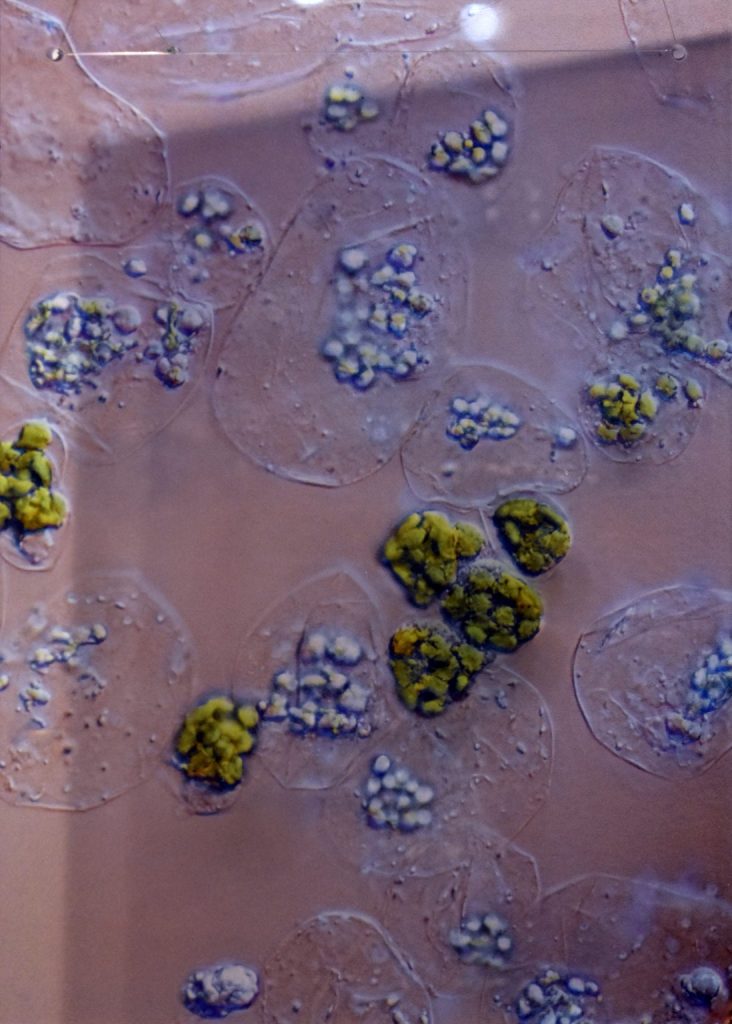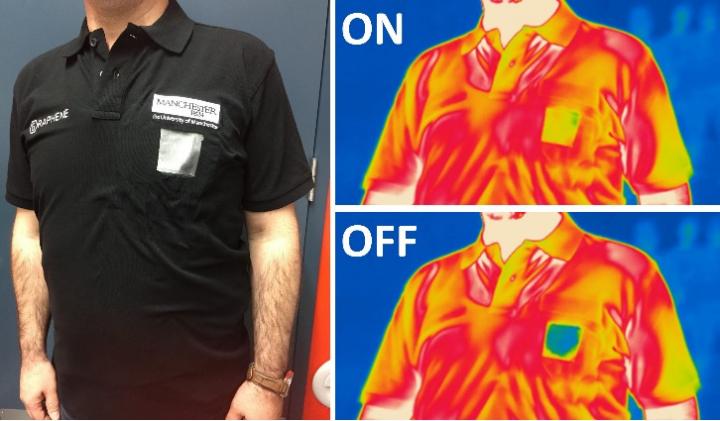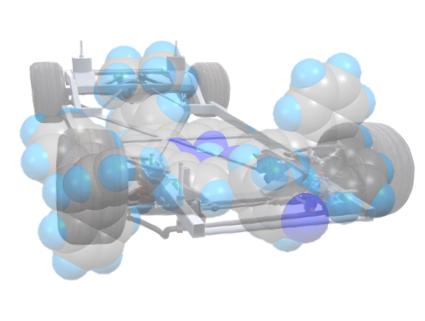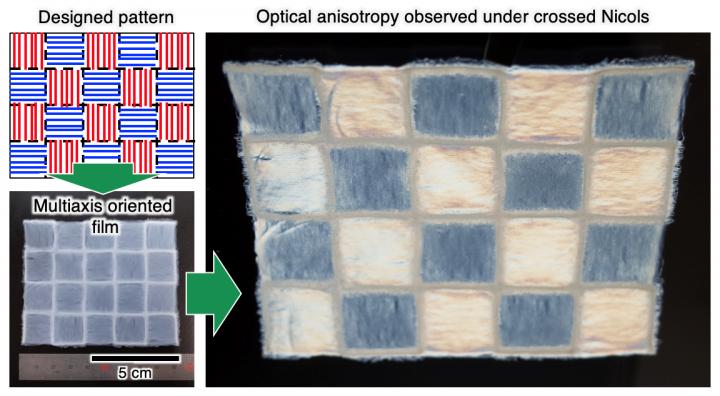One of the major problems with vaccines is that they need to be refrigerated. (The Nanopatch, which additionally wouldn’t require needles or syringes, is my favourite proposed solution and it comes from Australia.) This latest research into making vaccines more long-lasting is from the UK and takes a different approach to the problem.
From a June 8, 2020 news item on phys.org,
Vaccines are notoriously difficult to transport to remote or dangerous places, as they spoil when not refrigerated. Formulations are safe between 2°C and 8°C, but at other temperatures the proteins start to unravel, making the vaccines ineffective. As a result, millions of children around the world miss out on life-saving inoculations.
However, scientists have now found a way to prevent warmed-up vaccines from degrading. By encasing protein molecules in a silica shell, the structure remains intact even when heated to 100°C, or stored at room temperature for up to three years.
The technique for tailor-fitting a vaccine with a silica coat—known as ensilication—was developed by a Bath [University] team in collaboration with the University of Newcastle. This pioneering technology was seen to work in the lab two years ago, and now it has demonstrated its effectiveness in the real world too.
…
Here’s the lead researcher describing her team’s work
Ensilication: success in animal trials from University of Bath on Vimeo.
A June 8, 2020 University of Bath press release (also on EurekAlert) fills in more details about the research,
In their latest study, published in the journal Scientific Reports, the researchers sent both ensilicated and regular samples of the tetanus vaccine from Bath to Newcastle by ordinary post (a journey time of over 300 miles, which by post takes a day or two). When doses of the ensilicated vaccine were subsequently injected into mice, an immune response was triggered, showing the vaccine to be active. No immune response was detected in mice injected with unprotected doses of the vaccine, indicating the medicine had been damaged in transit.
Dr Asel Sartbaeva, who led the project from the University of Bath’s Department of Chemistry, said: “This is really exciting data because it shows us that ensilication preserves not just the structure of the vaccine proteins but also the function – the immunogenicity.”
“This project has focused on tetanus, which is part of the DTP (diphtheria, tetanus and pertussis) vaccine given to young children in three doses. Next, we will be working on developing a thermally-stable vaccine for diphtheria, and then pertussis. Eventually we want to create a silica cage for the whole DTP trivalent vaccine, so that every child in the world can be given DTP without having to rely on cold chain distribution.”
Cold chain distribution requires a vaccine to be refrigerated from the moment of manufacturing to the endpoint destination.
Silica is an inorganic, non-toxic material, and Dr Sartbaeva estimates that ensilicated vaccines could be used for humans within five to 15 years. She hopes the technology to silica-wrap proteins will eventually be adopted to store and transport all childhood vaccines, as well as other protein-based products, such as antibodies and enzymes.
“Ultimately, we want to make important medicines stable so they can be more widely available,” she said. “The aim is to eradicate vaccine-preventable diseases in low income countries by using thermally stable vaccines and cutting out dependence on cold chain.”
Currently, up to 50% of vaccine doses are discarded before use due to exposure to suboptimal temperatures. According to the World Health Organisation (WHO), 19.4 million infants did not receive routine life-saving vaccinations in 2018.
Here’s a link to and a citation for the paper,
Ensilicated tetanus antigen retains immunogenicity: in vivo study and time-resolved SAXS characterization by A. Doekhie, R. Dattani, Y-C. Chen, Y. Yang, A. Smith, A. P. Silve, F. Koumanov, S. A. Wells, K. J. Edler, K. J. Marchbank, J. M. H. van den Elsen & A. Sartbaeva. Scientific Reports volume 10, Article number: 9243 (2020) DOI: https://doi.org/10.1038/s41598-020-65876-3 Published 08 June 2020
This paper is open access
Nanopatch update
I tend to lose track as a science gets closer to commercialization since the science news becomes business news and I almost never scan that sector. It’s been about two-and-half years since I featured research that suggested Nanopatch provided more effective polio vaccination than the standard needle and syringe method in a December 20, 2017 post. The latest bits of news have an interesting timeline.
March 2020
Mark Kendal (Wikipedia entry) is the researcher behind the Nanopatch. He’s interviewed in a March 5, 2020 episode (about 20 mins.) in the Pioneers Series (bankrolled by Rolex [yes, the watch company]) on Monocle.com. Coincidentally or not, a new piece of research funded by Vaxxas (the nanopatch company founded by Mark Kendall; on the website you will find a ‘front’ page and a ‘Contact us’ page only) was announced in a March 17, 2020 news item on medical.net,
Vaxxas, a clinical-stage biotechnology company commercializing a novel vaccination platform, today announced the publication in the journal PLoS Medicine of groundbreaking clinical research indicating the broad immunological and commercial potential of Vaxxas’ novel high-density microarray patch (HD-MAP). Using influenza vaccine, the clinical study of Vaxxas’ HD-MAP demonstrated significantly enhanced immune response compared to vaccination by needle/syringe. This is the largest microarray patch clinical vaccine study ever performed.
…
“With vaccine coated onto Vaxxas HD-MAPs shown to be stable for up to a year at 40°C [emphasis mine], we can offer a truly differentiated platform with a global reach, particularly into low and middle income countries or in emergency use and pandemic situations,” said Angus Forster, Chief Development and Operations Officer of Vaxxas and lead author of the PLoS Medicine publication. “Vaxxas’ HD-MAP is readily fabricated by injection molding to produce a 10 x 10 mm square with more than 3,000 microprojections that are gamma-irradiated before aseptic dry application of vaccine to the HD-MAP’s tips. All elements of device design, as well as coating and QC, have been engineered to enable small, modular, aseptic lines to make millions of vaccine products per week.”
The PLoS publication reported results and analyses from a clinical study involving 210 clinical subjects [emphasis mine]. The clinical study was a two-part, randomized, partially double-blind, placebo-controlled trial conducted at a single Australian clinical site. The clinical study’s primary objective was to measure the safety and tolerability of A/Singapore/GP1908/2015 H1N1 (A/Sing) monovalent vaccine delivered by Vaxxas HD-MAP in comparison to an uncoated Vaxxas HD-MAP and IM [intramuscular] injection of a quadrivalent seasonal influenza vaccine (QIV) delivering approximately the same dose of A/Sing HA protein. Exploratory outcomes were: to evaluate the immune responses to HD-MAP application to the forearm with A/Sing at 4 dose levels in comparison to IM administration of A/Sing at the standard 15 μg HA per dose per strain, and to assess further measures of immune response through additional assays and assessment of the local skin response via punch biopsy of the HD-MAP application sites. Local skin response, serological, mucosal and cellular immune responses were assessed pre- and post-vaccination.
Here’s a link to and a citation for the latest ‘nanopatch’ paper,
Safety, tolerability, and immunogenicity of influenza vaccination with a high-density microarray patch: Results from a randomized, controlled phase I clinical trial by Angus H. Forster, Katey Witham, Alexandra C. I. Depelsenaire, Margaret Veitch, James W. Wells, Adam Wheatley, Melinda Pryor, Jason D. Lickliter, Barbara Francis, Steve Rockman, Jesse Bodle, Peter Treasure, Julian Hickling, Germain J. P. Fernando. DOI: https://doi.org/10.1371/journal.pmed.1003024 PLOS (Public Library of Science) Published: March 17, 2020
This is an open access paper.
May 2020
Two months later, Merck, an American multinational pharmaceutical company, showed some serious interest in the ‘nanopatch’. A May 28, 2020 article by Chris Newmarker for drugdelvierybusiness.com announces the news (Note: Links have been removed),
Merck has exercised its option to use Vaxxas‘ High Density Microarray Patch (HD-MAP) platform as a delivery platform for a vaccine candidate, the companies announced today [Thursday, May 28, 2020].
…
Also today, Vaxxas announced that German manufacturing equipment maker Harro Höfliger will help Vaxxas develop a high-throughput, aseptic manufacturing line to make vaccine products based on Vaxxas’ HD-MAP technology. Initial efforts will focus on having a pilot line operating in 2021 to support late-stage clinical studies — with a goal of single, aseptic-based lines being able to churn out 5 million vaccine products a week.
“A major challenge in commercializing microarray patches — like Vaxxas’ HD-MAP — for vaccination is the ability to manufacture at industrially-relevant scale, while meeting stringent sterility and quality standards. Our novel device design along with our innovative vaccine coating and quality verification technologies are an excellent fit for integration with Harro Höfliger’s aseptic process automation platforms. Adopting a modular approach, it will be possible to achieve output of tens-of-millions of vaccine-HD-MAP products per week,” Hoey [David L. Hoey, President and CEO of Vaxxas] said.
…
Vaxxas also claims that the patches can deliver vaccine more efficiently — a positive when people around the world are clamoring for a vaccine against COVID-19. The company points to a recent [March 17, 2020] clinical study in which their micropatch delivering a sixth of an influenza vaccine dose produced an immune response comparable to a full dose by intramuscular injection. A two-thirds dose by HD-MAP generated significantly faster and higher overall antibody responses.
…
As I noted earlier, this is an interesting timeline.
Final comment
In the end, what all of this means is that there may be more than one way to deal with vaccines and medicines that deteriorate all too quickly unless refrigerated. I wish all of these researchers the best.



